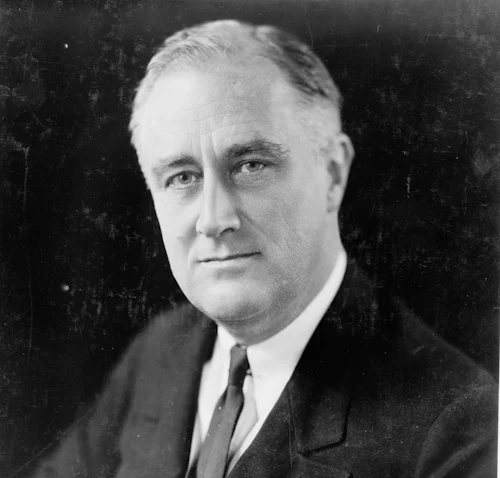
Blame it all on Franklin D. Roosevelt.
Not until FDR became president in 1933 and successfully advanced a breath-taking pottage of legislative proposals was any chief executive judged by what he did in his first 100 days.
Since then, say presidential scholars, every chief executive has been measured on an arbitrary scale that has as its end point any April 29 in a president’s first year in office.
“Only a president facing an extraordinary emergency should have to meet that artificial deadline for significant action,” author John Dickerson has argued in opposing the 100 days scale in his 2020 book The Hardest Job in the World.
Dickerson has suggested instead that “the press and the president’s opponents should allow a new administration more time to settle in.”
The problem may be that so many have become addicted to the 100 days idea simply because the first time it was called that, by Roosevelt himself, was at the end of an extraordinary three months seeing the passage of such landmark legislation as the Emergency Banking Act and the National Industrial Recovery Act.
Moreover, FDR’s legislation led to the creation of the Civilian Conservation Corps, the Agriculture Adjustment Administration, and the Tennessee Valley Authority.
“FDR’s extraordinary productivity translated into enormous popularity,” author Sarah Pruitt has remarked in the publication History, noting that the 100-day idea has since created a “standard against which all future presidents would (perhaps unfairly) be measured.”
Understandably, some post-FDR presidents have been less than enthusiastic about that standard. “I’m sick and tired of hearing how we are planning another hundred days of miracles,” John Kennedy told an aide days before he assumed office, according to the Wall Street Journal.
Presidents Reagan, Clinton, and Obama have also been reported to dislike the standard.
But by all accounts, President Trump has enjoyed the standard, this week declaring that he has just completed the “most successful 100 days of any president in the history of our country.”
According to the White House, Trump has signed 143 executive orders in his first 100 days, 26 of which were issued on the first day of his presidency, along with 42 proclamations, representing what the New York Times has characterized as “a whirlwind of action.”
The paper has also asserted that Trump has “done more in his first 100 days to change the trajectory of the country than any president since Franklin D. Roosevelt.”
But despite the whirlwind of action, reports The Hill, Trump has thus far signed only five actual bills into law, and has seen just 53 of his 1,300 presidential appointees approved by the Senate.
The president’s executive orders have also triggered a record 221 cases filed against the administration, according to a study by the New York University School of Law, producing a flurry of activity beneficial to one group of professionals for certain: lawyers.
May 1, 2025
By Garry Boulard
Photo courtesy of Unsplash

